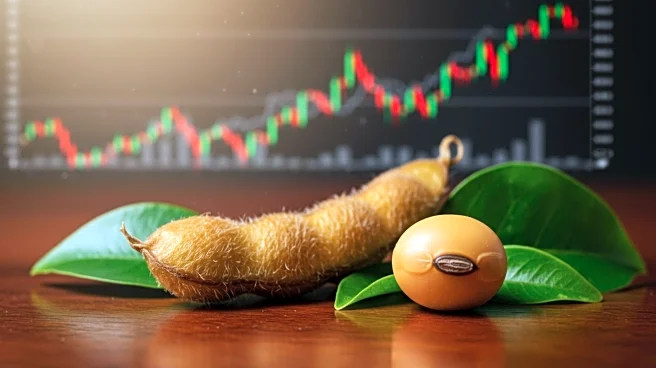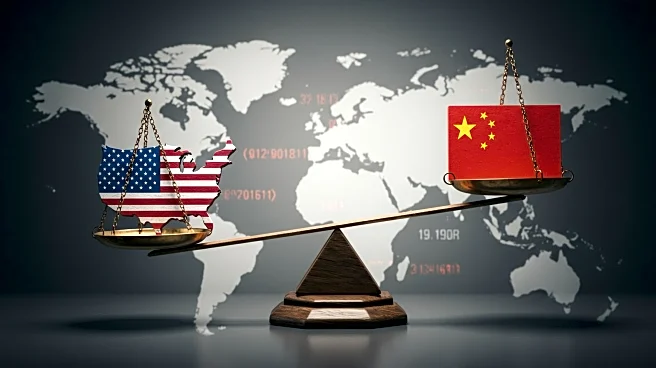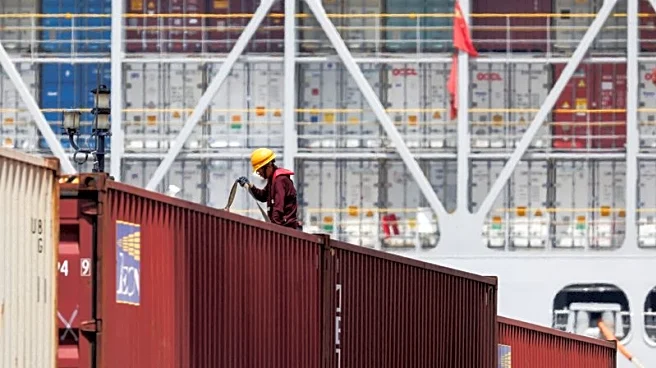What's Happening?
U.S. soybean exporters are facing significant challenges in securing sales to China, the world's largest importer of oilseeds. As trade tensions persist, Chinese buyers have increasingly turned to Brazil for their soybean needs, particularly during the key U.S. marketing season. According to traders, Chinese importers have already booked substantial soybean cargoes from South America for September and October, totaling around 12 million metric tons. This shift comes amid unresolved trade tensions and a 23% tariff on U.S. soybean imports, which has made American soybeans less competitive compared to Brazilian offerings. Historically, China has relied on U.S. soybeans between September and January, but recent developments indicate a strategic move to reduce dependence on U.S. agricultural products.
Why It's Important?
The shift in China's soybean purchasing strategy has significant implications for U.S. agriculture and trade. The potential loss of billions of dollars in sales could impact U.S. farmers and the broader agricultural industry, which relies heavily on exports to China. The ongoing trade tensions and tariffs have created an uncertain environment, affecting market prices and futures trading. If the U.S. fails to secure a trade agreement that reduces tariffs, American soybean exporters may continue to lose market share to Brazilian competitors. This situation underscores the importance of resolving trade disputes to maintain economic stability and support U.S. agricultural exports.
What's Next?
The extension of the tariff truce by 90 days offers a window for potential negotiations between the U.S. and China. If both sides reach an agreement to reduce duties, China could resume purchasing U.S. soybeans, potentially extending the U.S. export window and affecting Brazil's new-crop sales. However, without a reduction in tariffs, U.S. soybeans remain uncompetitive, and the likelihood of increased sales remains uncertain. Stakeholders in the U.S. agricultural sector will be closely monitoring trade talks and any developments that could influence market dynamics and export opportunities.
Beyond the Headlines
The strategic shift by China to diversify its soybean sources reflects broader geopolitical and economic considerations. By reducing reliance on U.S. agricultural products, China is positioning itself to mitigate risks associated with trade disputes and tariffs. This move could have long-term implications for global agricultural trade patterns and the U.S.'s role in the international market. Additionally, the situation highlights the interconnectedness of global supply chains and the impact of political decisions on economic relationships.












